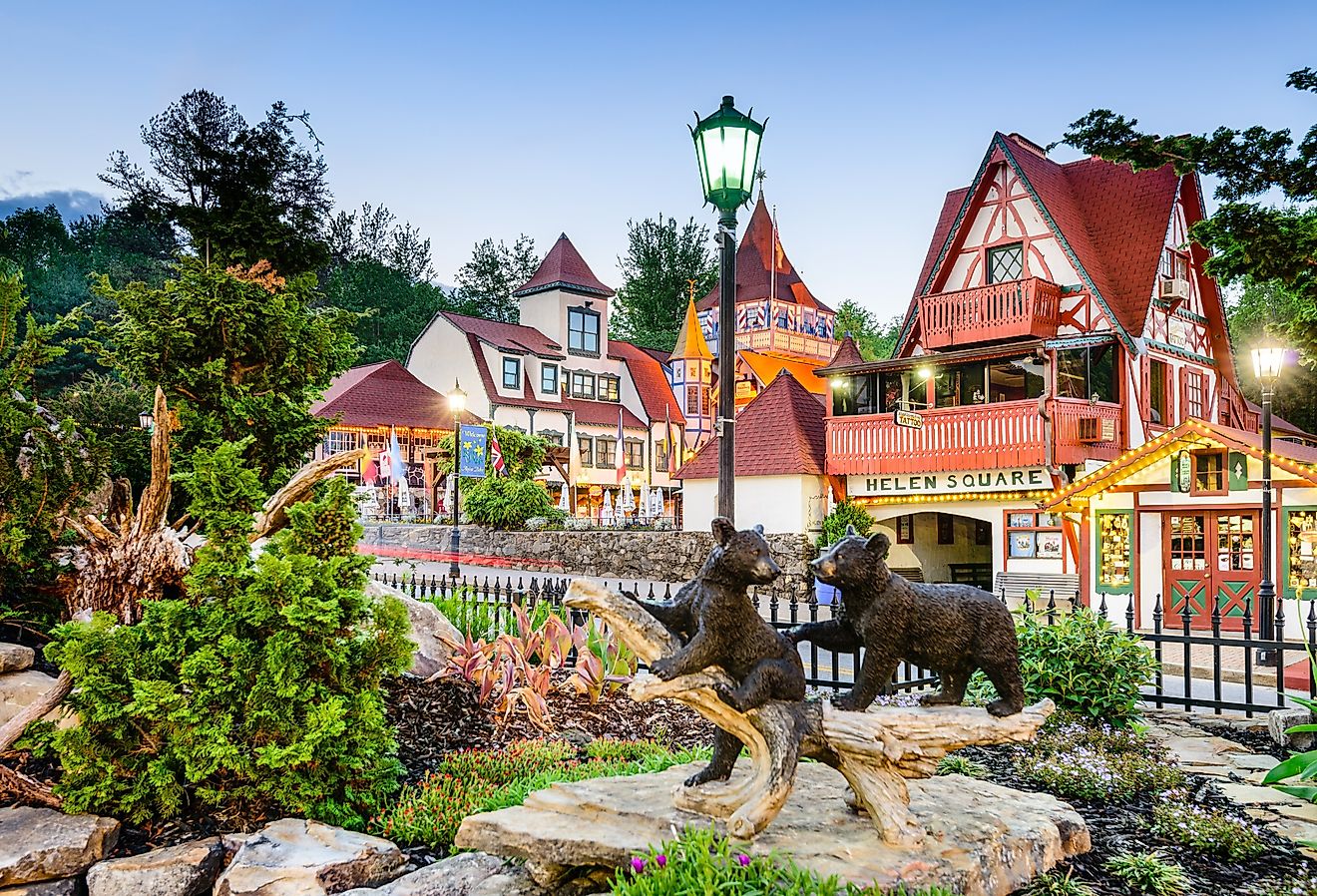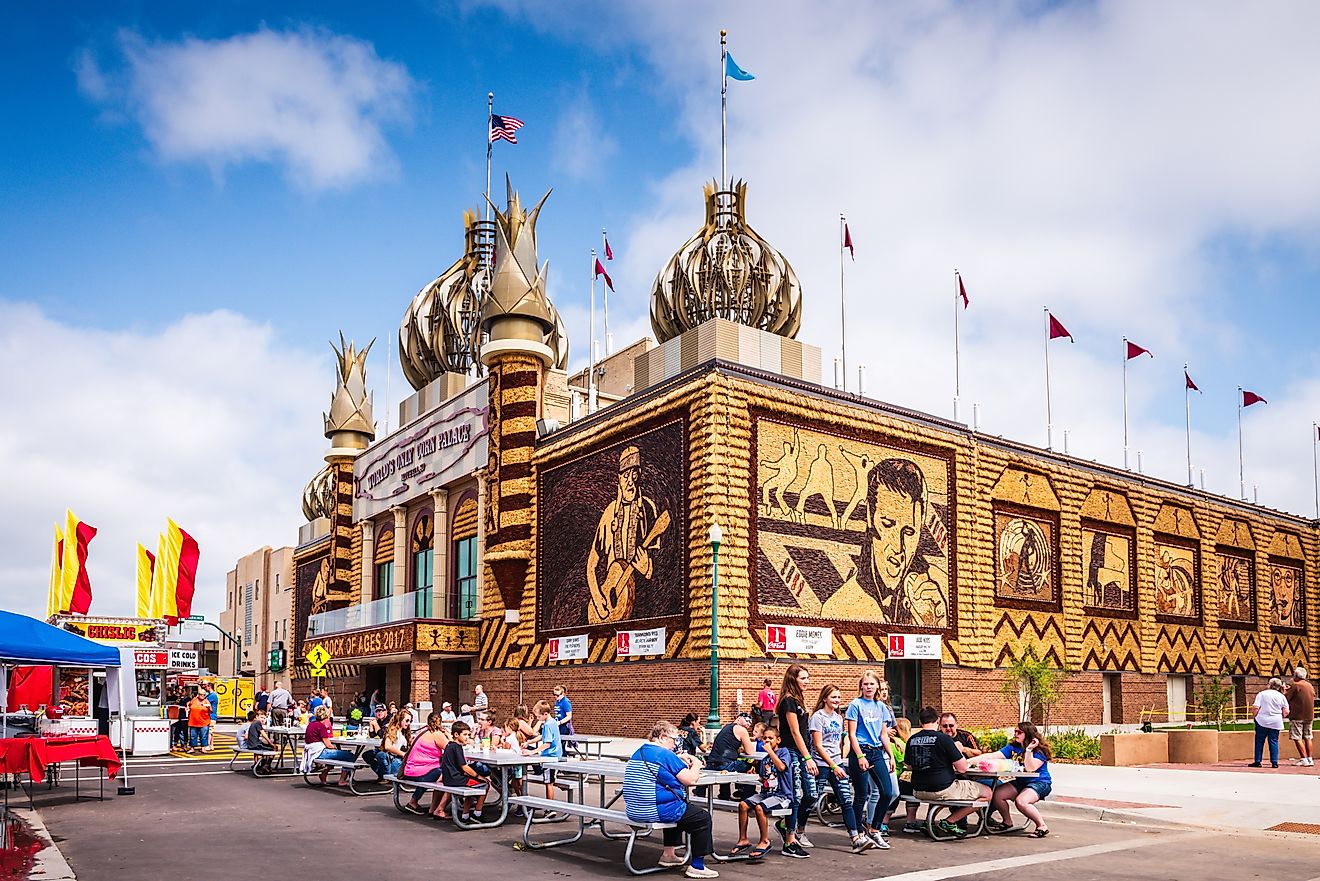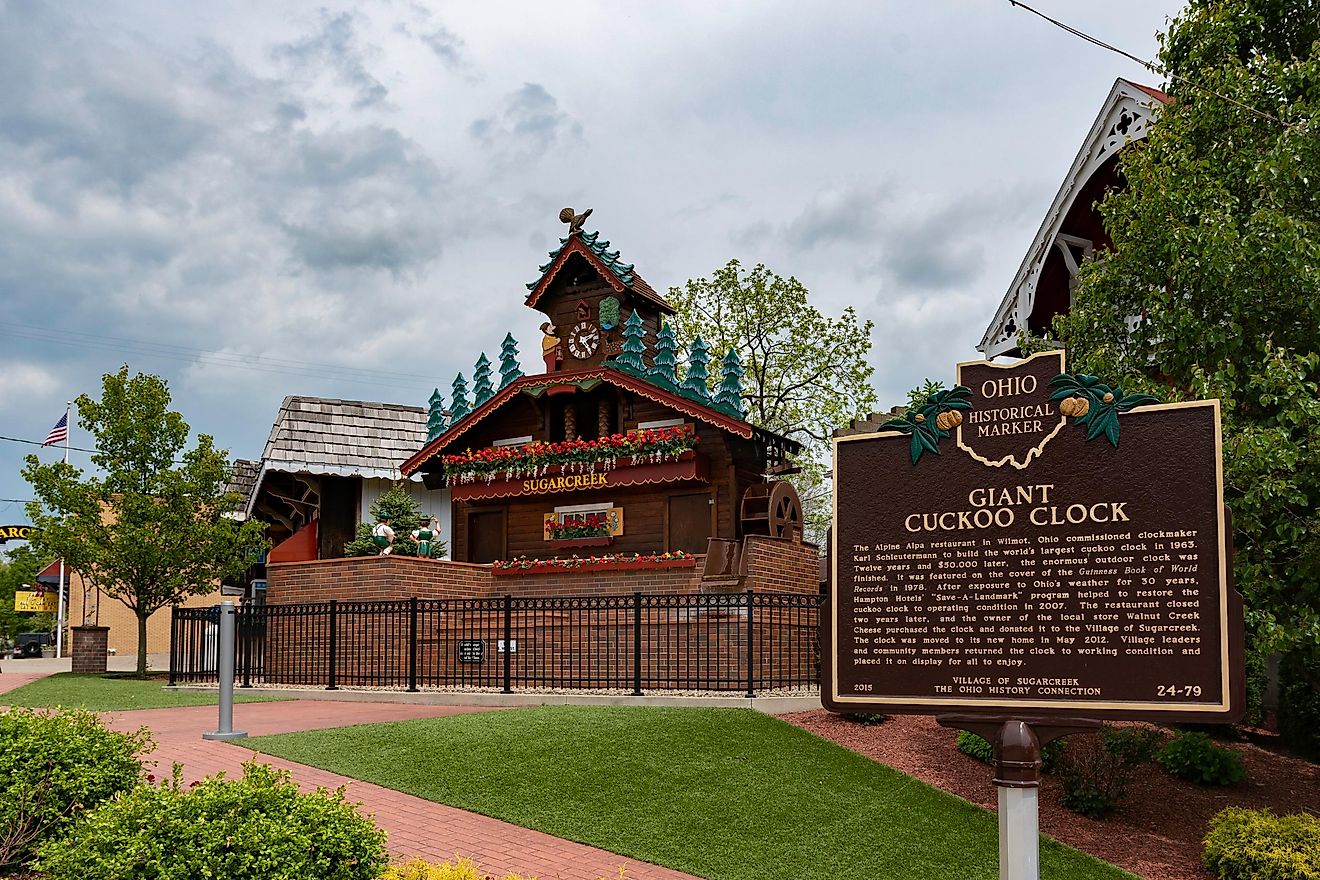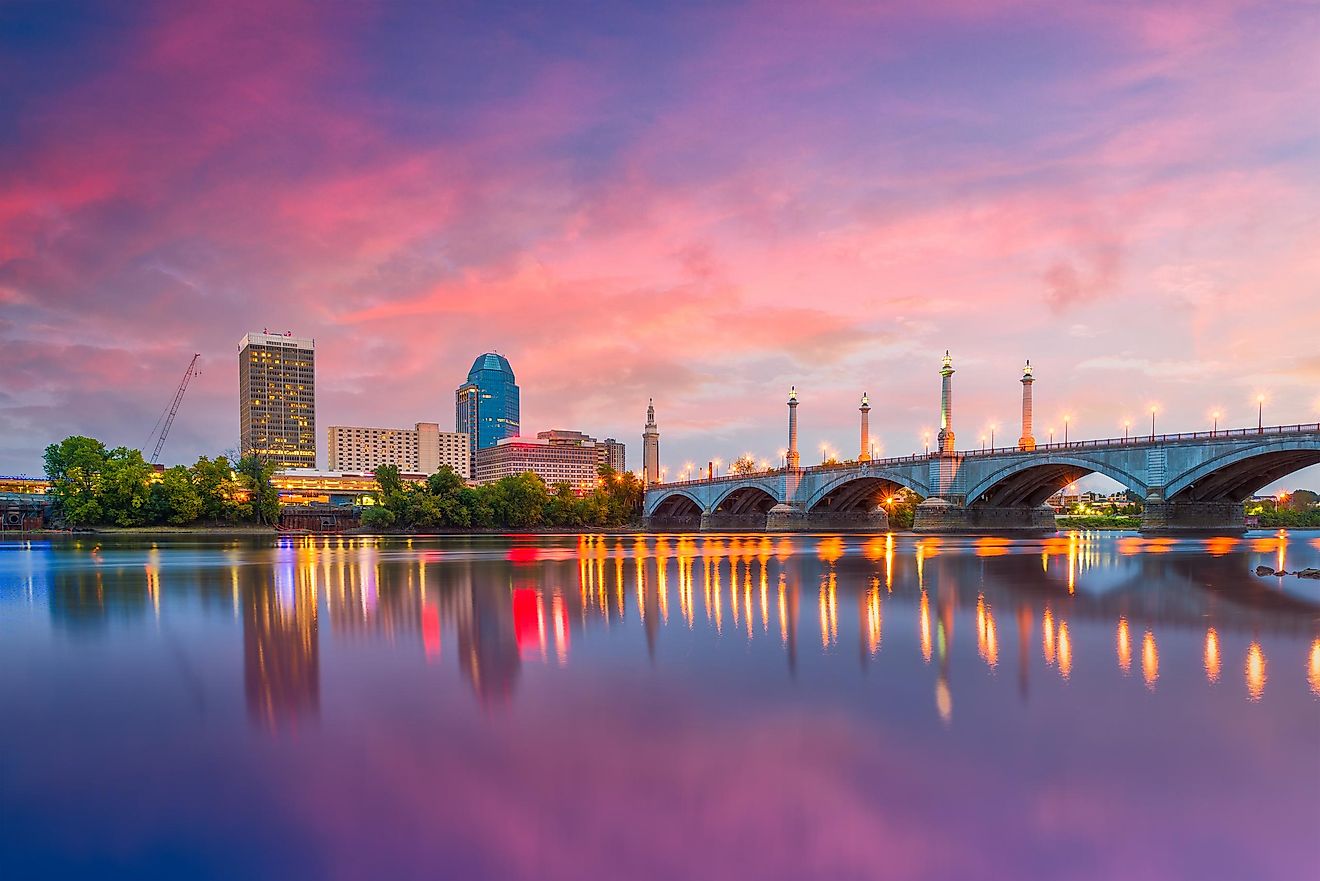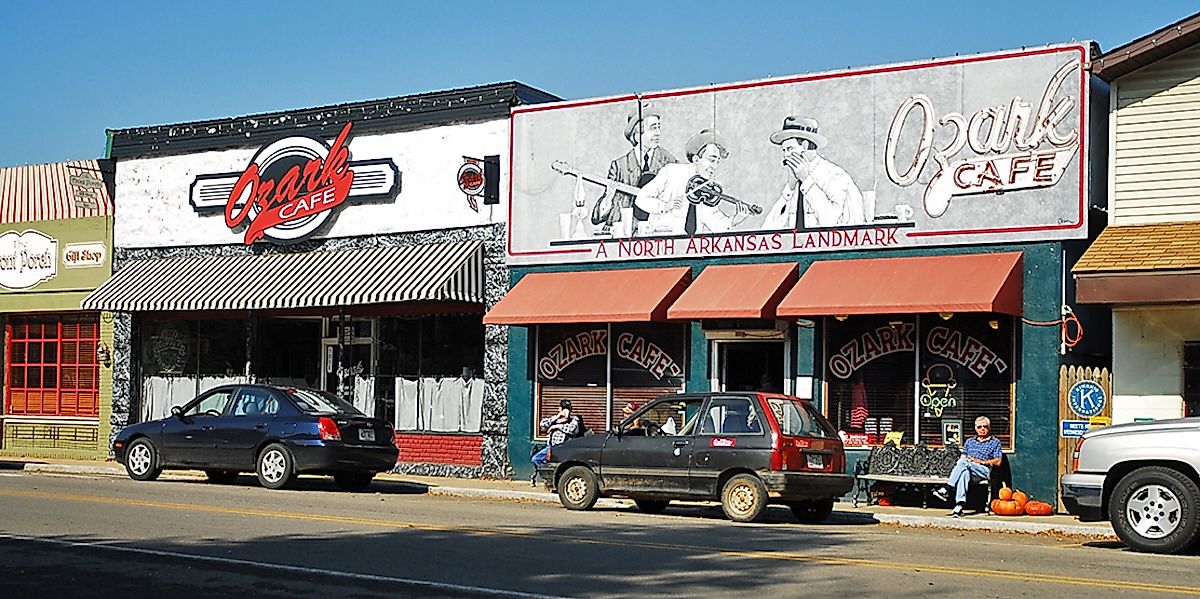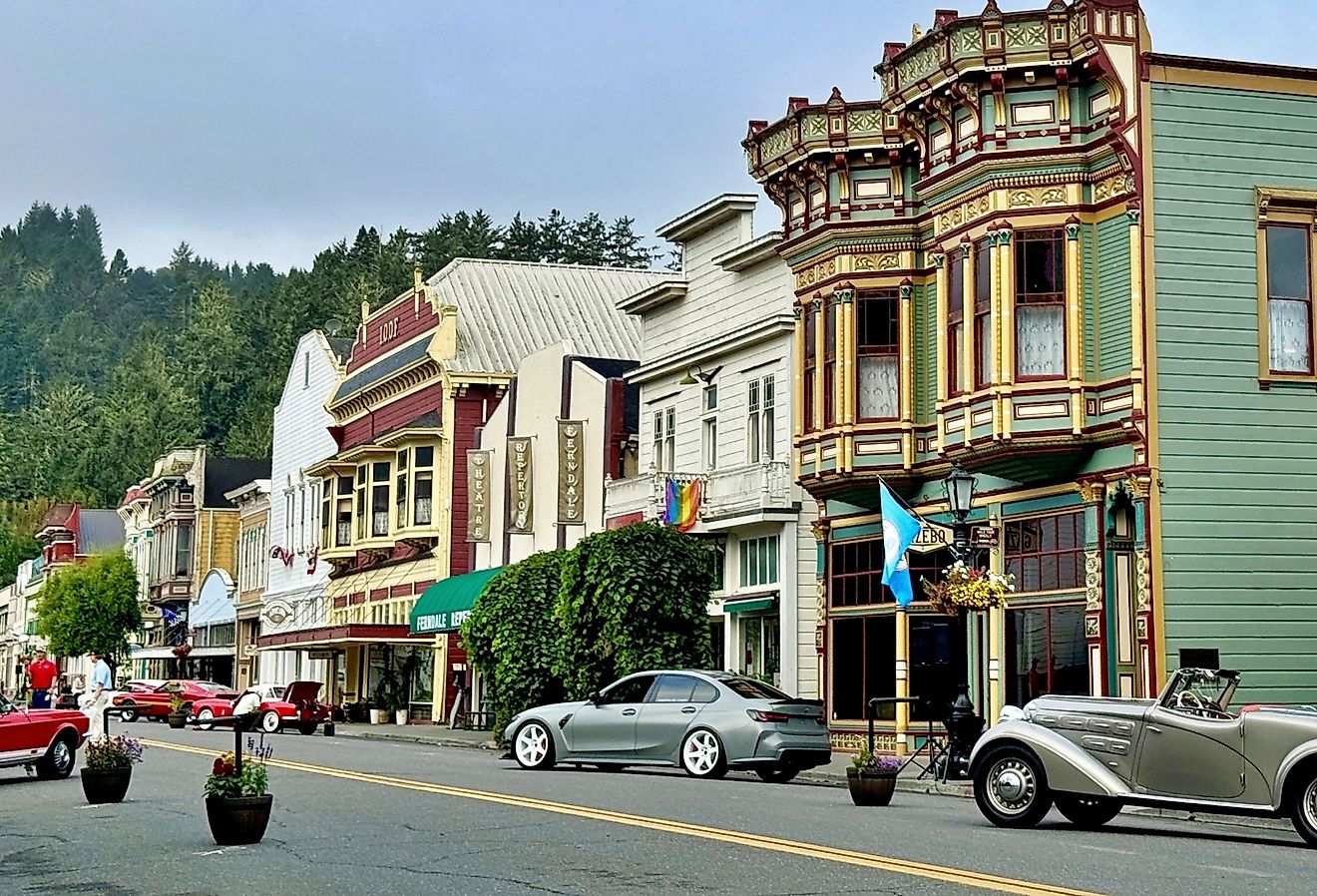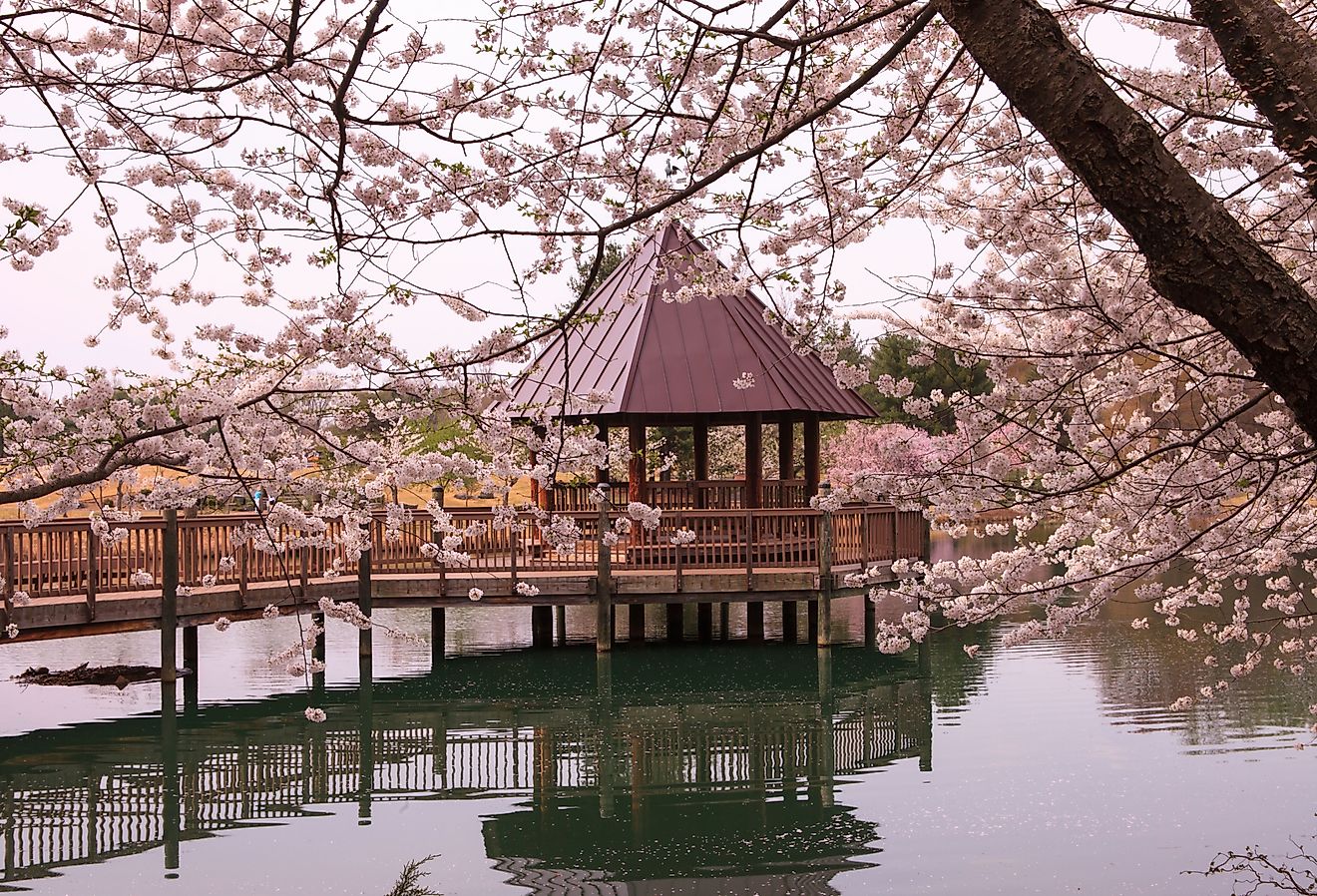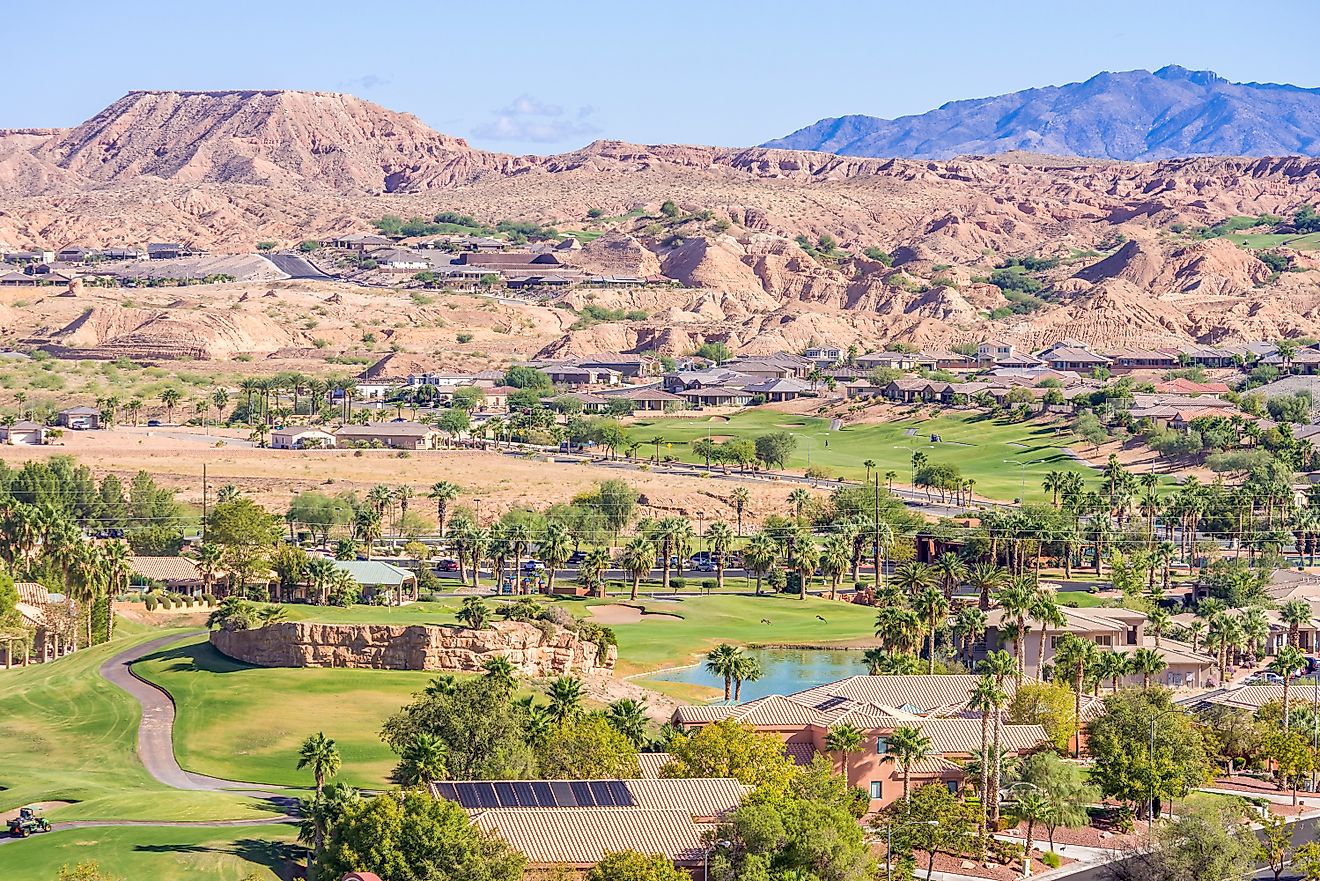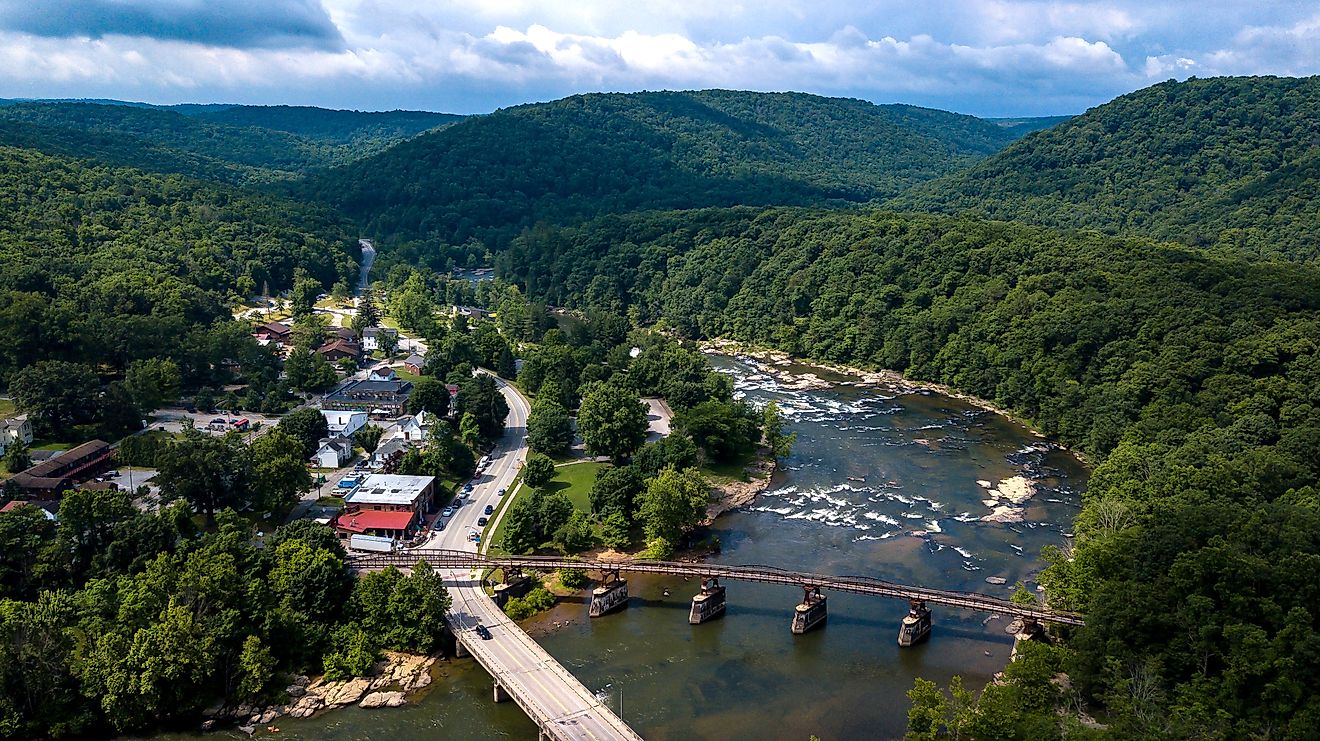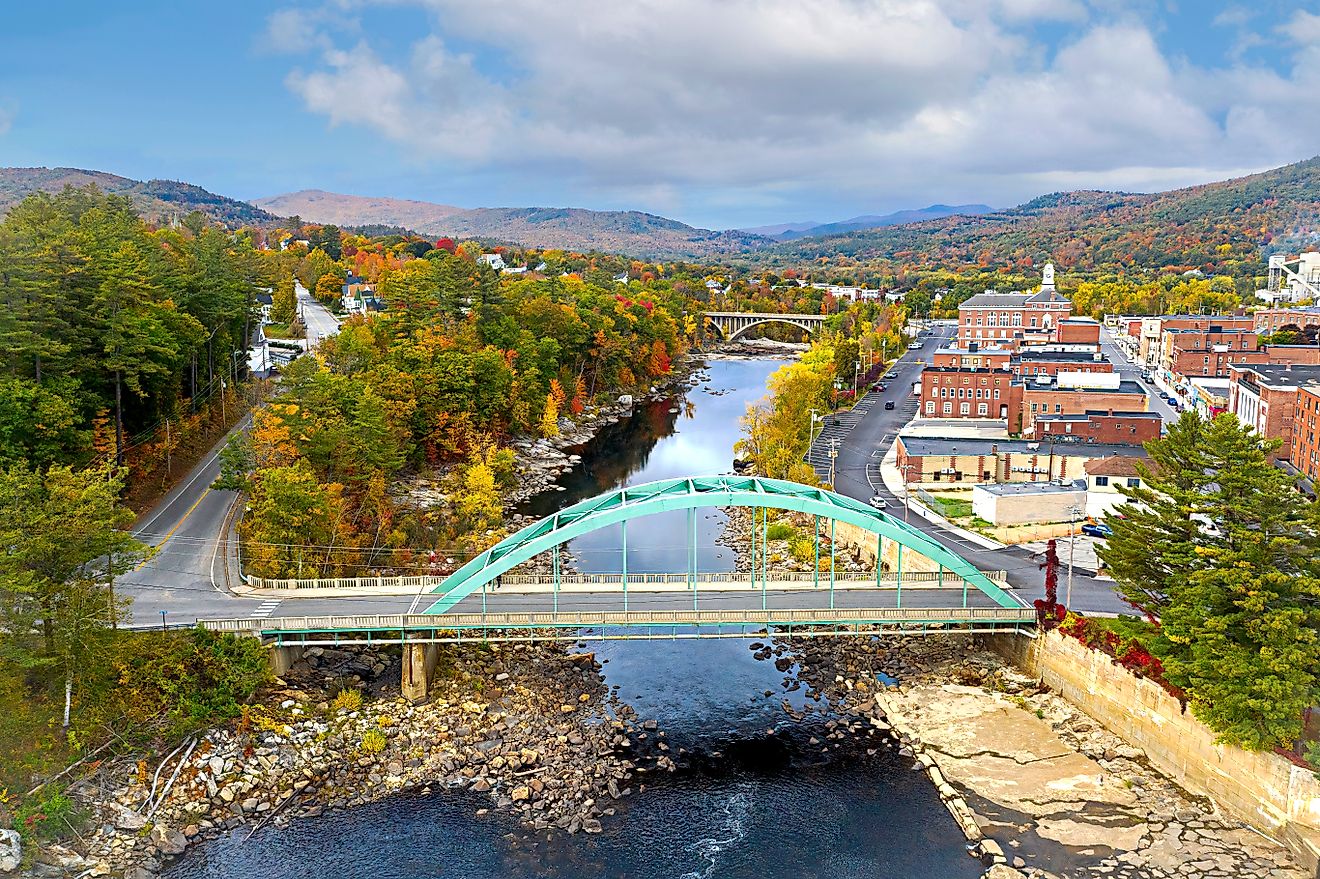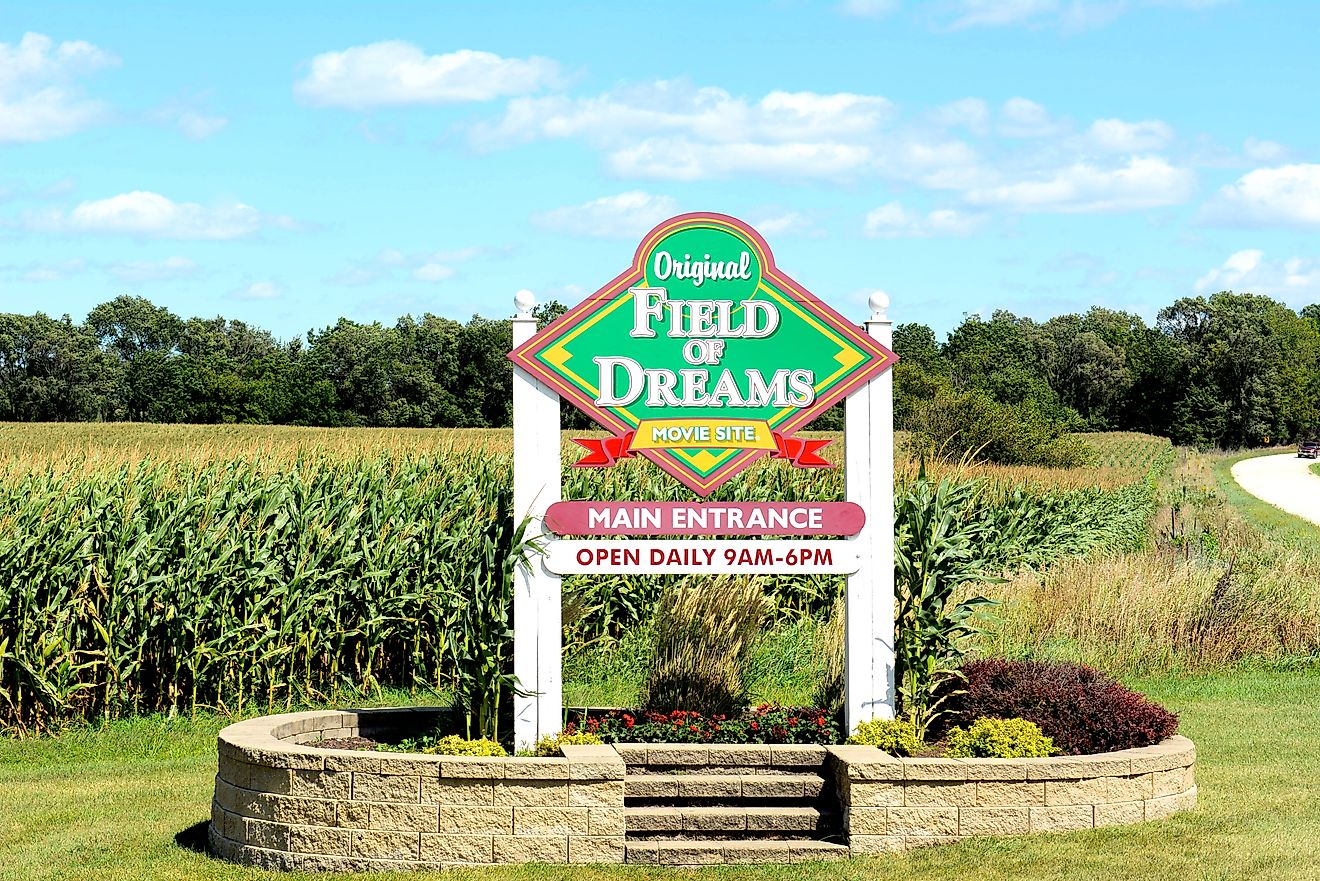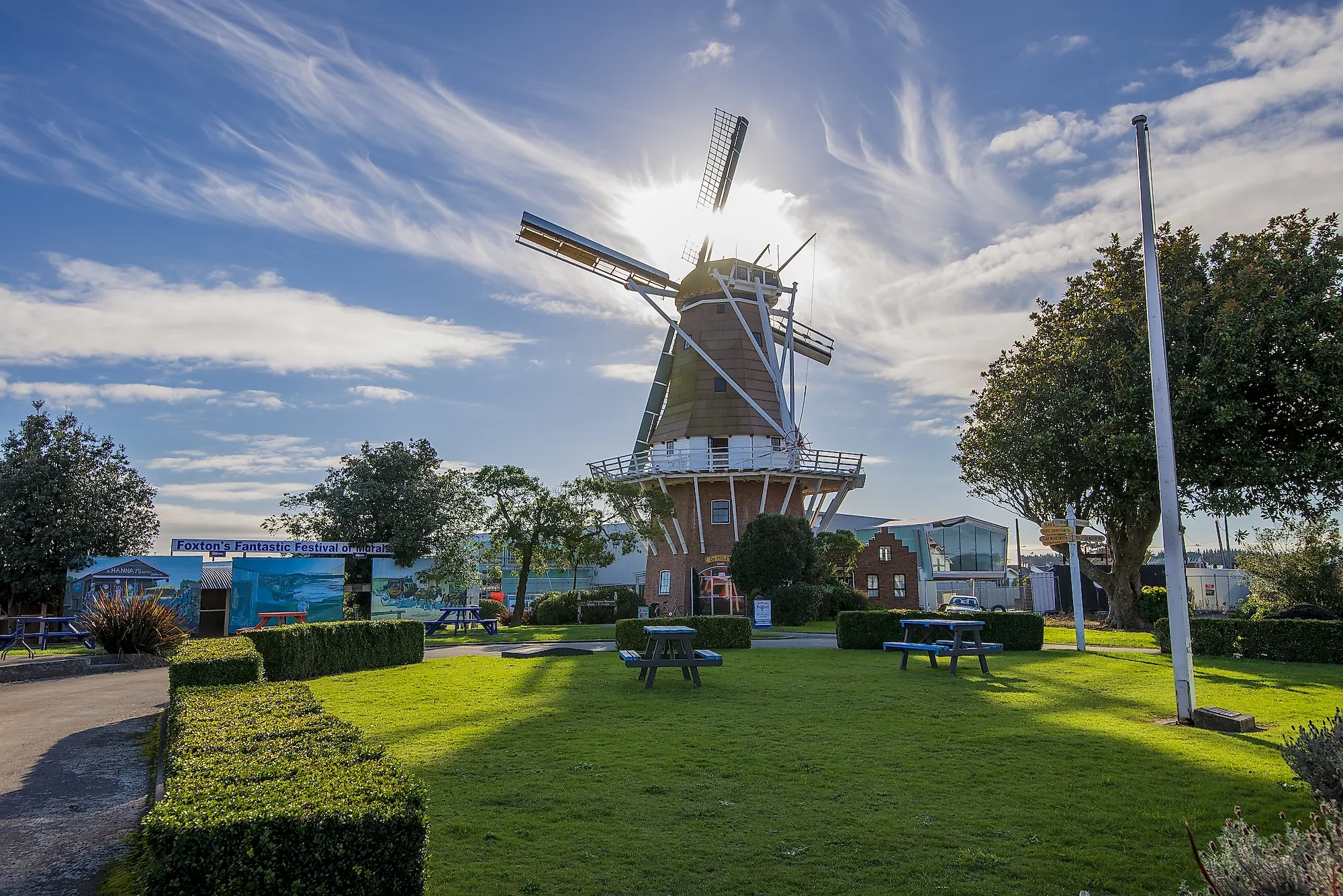
Foxton, New Zealand
Also referred to as Te Awahou in the native Maori language, Foxton is a small town situated in the Horowhenua district in the Manawatu-Whanganui region on the lower west coast of North Island of New Zealand. Foxton has been named after Sir William Fox, who served as the second premier of New Zealand. The town has preserved both its Maori and Pakeha heritage through several museums, parks, and heritage buildings.
Geography Of Foxton
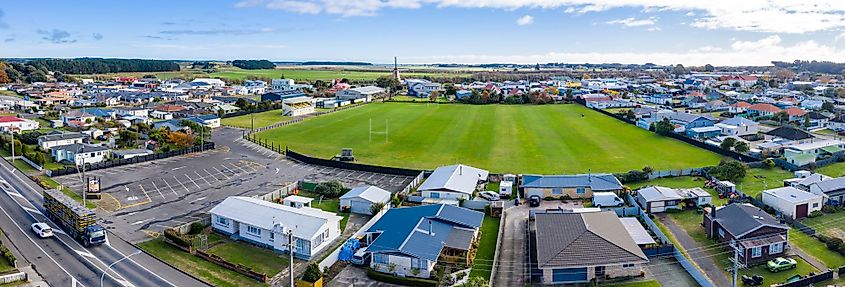
As per Statistics New Zealand, Foxton is described as a small urban area that covers a total area of 11.57 sq. km. The town is situated near the banks of the Manawatu River, on State Highway 1, approximately halfway between the country’s capital city Wellington and the Tongariro National Park. Foxton is located approximately 30km southwest of Palmerston North and 19.3km north of Levin. Located on the Tasman Sea coastline, about 6km to the west of the town, the small coastal settlement of Foxton Beach is also considered to be a part of Foxton.
Climate
According to the Köppen climate classification, Foxton experiences a maritime temperate climate, with short and comfortable summers and cold and wet winters. The warm summer season lasts from December to March, with February being the hottest month, having an average high temperature of 21.1°C and a low temperature of 14.4°C. The cold season lasts from June to September, with July being the coldest month, having an average low temperature of 7.2°C and a high temperature of 12.2°C. The town receives an average annual precipitation of 900mm and has an average of 2000 sunshine hours per year. The winds in Foxton blow from the west to northwest direction and drive the sand back from the coast, creating New Zealand’s most extensive sand dune system.
The Population And Economy Of Foxton
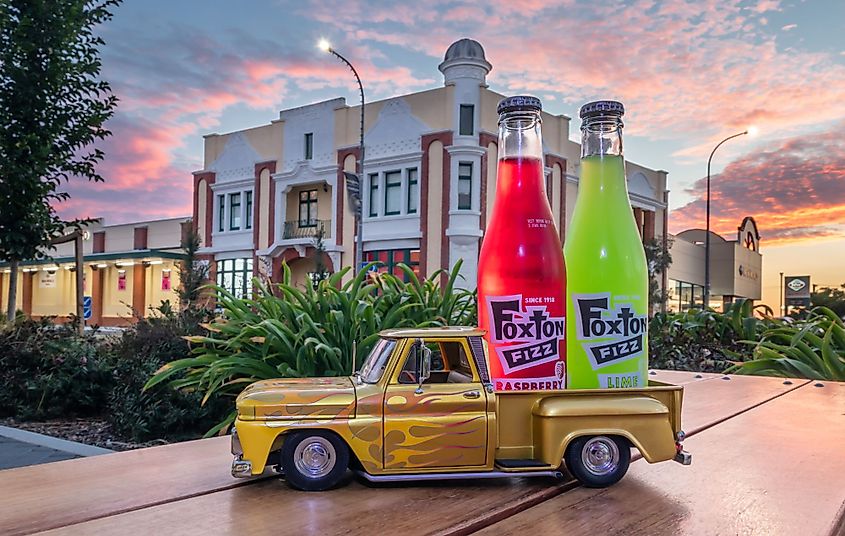
As of June 2021, Foxton has a population of 3,330 inhabitants. The town’s population has increased from the 2018 New Zealand census, which showed that the town was home to 3,147 inhabitants. Foxton has a population density of 290 inhabitants per sq. km. About 79.1% of the town’s population were European/Pakeha, 3.6% Pacific people, 2.8% Asians, and 1.0% other ethnicities.
At present, Foxton serves as a commercial and economic center. Some of the most important economic activities of Foxton include processing of flax fiber, sawmilling, manufacturing of wool packs, cloth, matting, ropes, etc. The town is also well known for producing a famous soda drink named Foxton Fizz. The main street of Foxton hosts many historic buildings, boutique shops, cafes, and antique stores. Located close to Foxton, the beautiful Foxton Beach offers several outdoor recreational activities for visitors, including swimming, fishing, biking, skateboarding, etc.
Tourist Attractions In Foxton
The Te Awahou Riverside Cultural Park
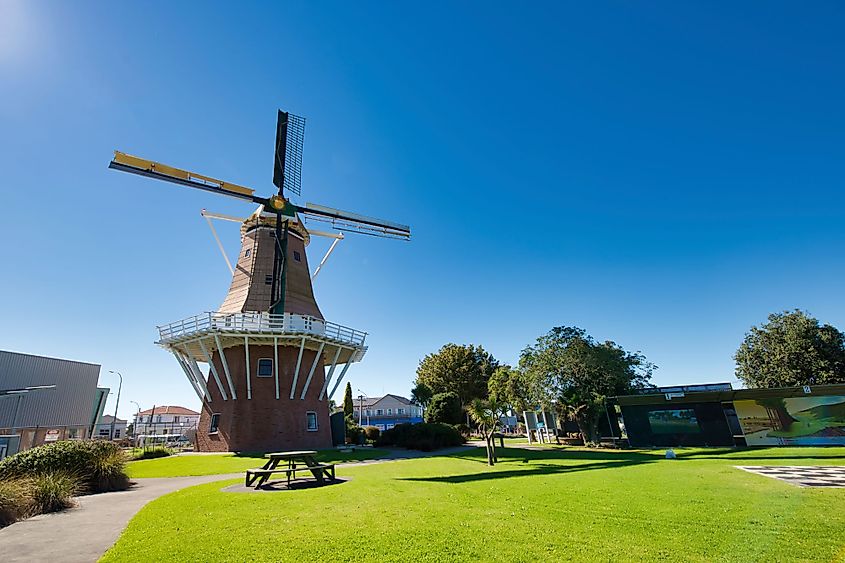
Located at the center of Foxton, the Te Awahou Riverside Cultural Park includes a Maori carving workshop, a Dutch windmill, and the Flax Stripper Museum. The Te Awahou Riverside Cultural Park is also home to the award-winning Te Awahou Nieuwe Stroom, which serves as a multi-cultural community and visitor hub. The Te Awahou Nieuwe Stroom consists of two museums (Piriharakeke museum and Oranjehof museum), a library, a council service center, a cafe, a heritage room, and an i-SITE. More than 150,000 local and international tourists visit the facility every year.
Foxton Flax Stripper Museum
Located on Foxton’s Main Street behind the windmill and the Te Awahou Nieuwe Stroom, the Flax Stripper Museum tells stories about the history of the flax industry in the area and why Foxton can claim to be the flax capital of New Zealand. The museum exhibits the country’s only working stripper and scutching machines. In addition to this, there are many photographs, woven flax pieces, newspaper cuttings, etc., that reveal amazing stories about the history of the flax industry.
National Museum of Audio-Visual Arts & Sciences
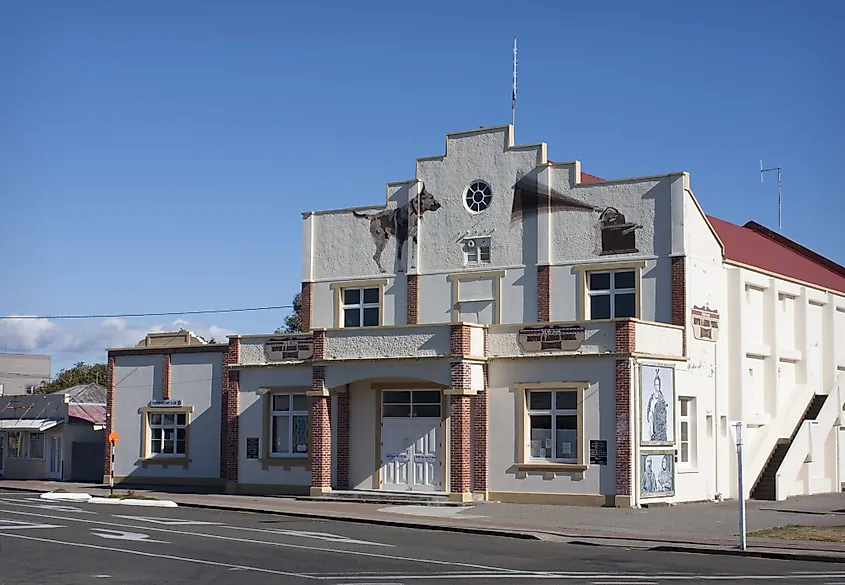
Also referred to as the MAVTech Museum, the National Museum of Audio-Visual Arts & Sciences is located in a restored movie theatre in Foxton. The museum houses a vast collection of different types of equipment that are related to audiovisual arts and associated sciences.
Foxton Courthouse
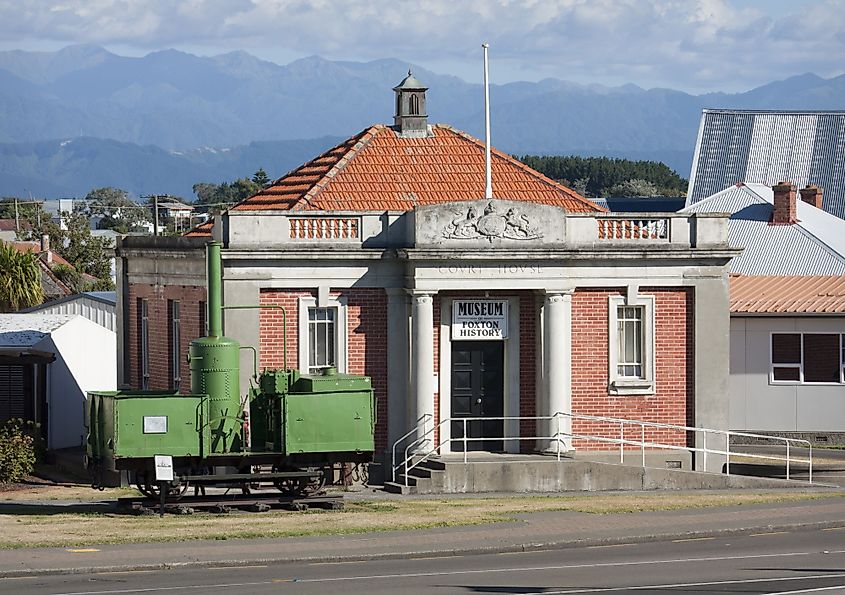
The Foxton Courthouse is a historic building that was constructed in 1929 in Foxton. As per historical records, the court heard civil and criminal cases until 1948. The courthouse was closed in 1971 and eventually became home to the vast collection of the Foxton Historical Society Museum. In 2013, the Horowhenua District Council closed the building due to earthquake risk.
Brief History Of Foxton
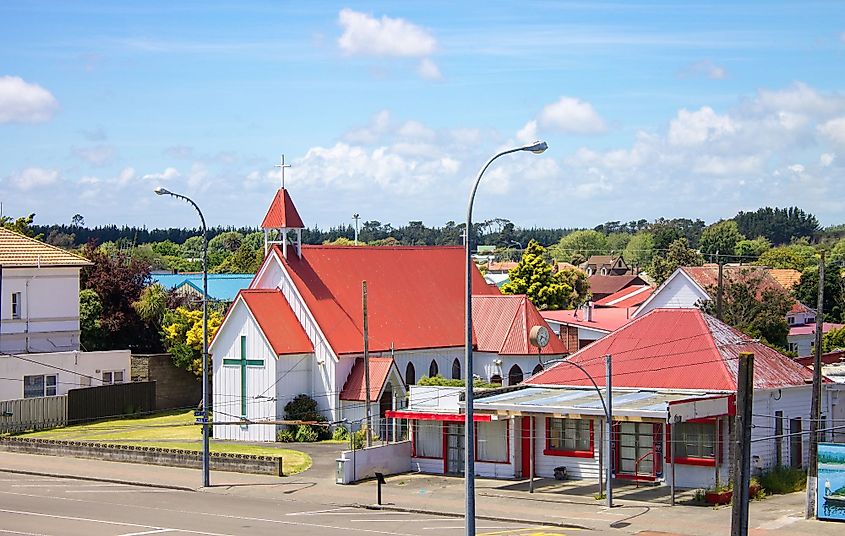
Foxton initially began as a Maori settlement along the Manawatu River estuary. Since then, many tribes have occupied the area, including Rangitane, Ngati Ara, Ngati Mamoe, Ngati Toa, Ngati Ngarongo, and Ngati Takihiku. In 1855 after an earthquake destroyed the original white settlement of Paiaka, the settlers moved to the Maori settlement of Te Awahou. The town was then renamed “Foxton” in honor of New Zealand’s Premier Sir William Fox. The town served as a popular shipping port and trading post. From 1869 onwards, the town thrived on the flax boom. However, with the arrival of Palmerston North-Wellington Railway, the city of Palmerston North took over as Manawatu’s most important center. With the opening of the proposed railway line in 1886, Foxton lost its status as a port. The town’s position further deteriorated after the Wellington and Manawatu Railway got incorporated into the national railway network in 1908.
